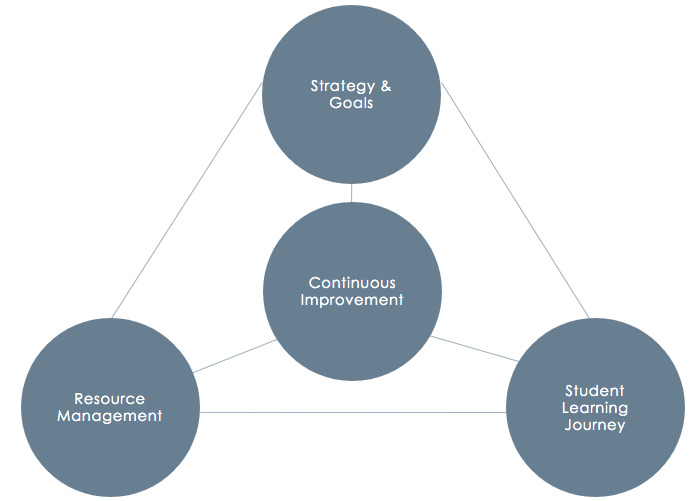Central to the SSE Educational Improvement System is the student learning journey. This journey serves as the focal point and organizational framework for the School’s educational activities. It consists of three different phases. It starts with the recruitment and admission of students. The second phase is teaching and learning assurance. Phase three is the assurance of educational outcomes.
Phase 1 - Recruitment and Admission of Students
It is crucial to SSE’s mission to recruit high-quality students. Selection of high-quality students is an essential quality factor because high quality education follows from the interaction of students who are talented, motivated, and academically accomplished. SSE must therefore have recruitment and selection processes that ensure the enrollment of a diverse body of excellent students. Based on the applicable admissions regulations, admissions is carried out by Admissions Boards, one for each educational level.
To monitor the quality of the recruitment and admissions process, the SSE Education Office carries out annual surveys of admitted students (Entrant Survey) and of those who decline the admissions offer (Decline Survey). For applicants who were admitted but declined the offer, assessment is exploratory rather than criterial, and it seeks to understand why accepted applicants decline and where they have enrolled instead of SSE.
Phase 2 – Quality Work with Teaching & Learning
Because SSE only enrolls students into degree programs and not into standalone courses, degree programs are the central component in the second phase of a student learning-journey approach to quality improvement. The program level serves as the key arena for the achievement of educational outcomes. The operational organization of programs reflect this. There is a Program Director for each program, whose role and responsibilities are regulated by the Rules of Procedure. At each program level, there is also a system of program managers, who deal with much of the day-to-day student interaction. Program evaluations are carried out annually, and these constitute one of the sources used.
Although there are elements of the program experience that go beyond individual courses, degree programs ultimately rest upon a set of courses. Assuring the quality of these courses is therefore central to assuring the quality of the degree program. Courses and their outcomes are assessed at three different points: mid-course, end-of-course, and grade-distribution reviews.
- SSE uses a system of mid-course feedback. Course Directors are free to determine the format, parameters and criteria for mid-course feedback and use them to address potential concerns with the course, particularly those that may be addressed during an ongoing course.
- Each course is subject to a centralized end-of-course evaluation. There is a standardized format for these evaluations, although Course Directors are free to add additional questions. The end-of-course evaluations collect both qualitative and quantitative feedback. The information collected in the course evaluations is therefore shared widely in the organization.
- As part of the quality assessment of courses, SSE works to safeguard against grade inflation. This safeguard consists of a stipulated limit on the proportion of students receiving the highest grade (Excellent). To monitor the compliance with this stipulation, there is a system of grade-distribution reviews in place.
As the final dimension of the quality assessment of teaching and learning, SSE continuously monitors student progress. These assessments are used primarily to support students. Because SSE is a small academic institution and all but one of our degree programs has 90 students or fewer per cohort, student advisors and program managers keep track of students’ academic progress and offer support whenever needed.
Phase 3 - Quality Work with Educational Outcomes
Given its mission and close relationship with the business community, SSE must ensure the quality of programs beyond graduation in students’ careers and contributions to society. Two types of quality work measure this long-term strategic impact. First, a placement survey of recent graduates. Second, the data collection carried out as part of business school rankings that are conducted by various ranking bodies, primarily the Financial Times (FT).
